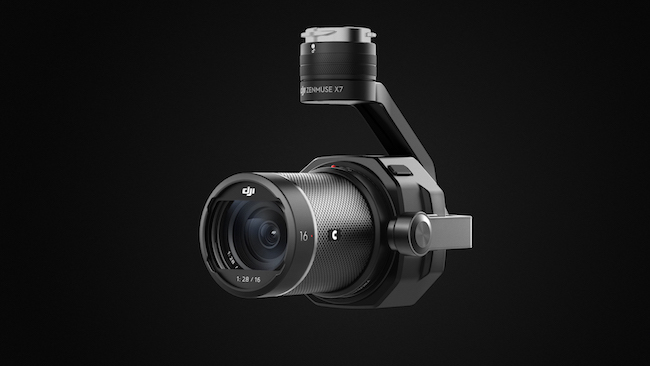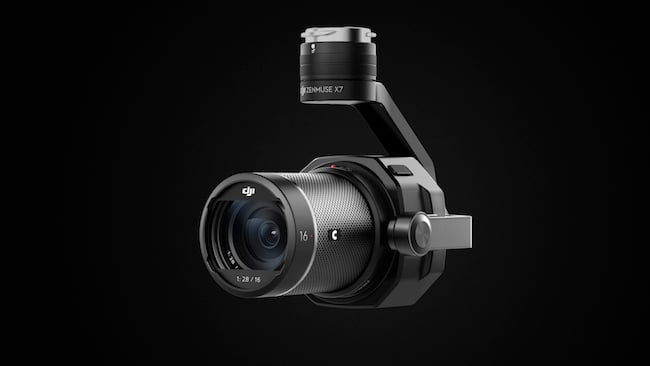
 Initially only available for the Inspire 2, the X7 will eventually be rolled out to other DJI platforms
Initially only available for the Inspire 2, the X7 will eventually be rolled out to other DJI platforms
DJI’s purchase of Hasselblad earlier this year was an indication that it was as serious about the optical side of its business as about its aerial platforms and the new 6K $2700 Zenmuse X7 is proof.
Initially available for the Inspire 2 drone, DJI is billing the Zenmuse X7 as the world’s first Super 35 digital film camera optimised for professional aerial cinematography and it certainly has a host of innovations packed into it.
For a start, it uses a dedicated aerial mount system, the newly-developed DJI DL-Mount, which shortens the X7’s flange focal distance to 16.84 mm, making the camera more compact and stable for aerial shoots. Four interchangeable carbon fibre lenses are available with focal lengths of 16, 24, 35, and 50mm, and each has a maximum aperture of F/2.8 and is crafted out of carbon fiber, making them durable and lightweight for high-performance aerial cinematography with the DJI Inspire 2 drone.
The 16mm lens is equipped with a built-in ND 4 filter, and the 24, 35, and 50mm versions feature a mechanical shutter with a max shutter speed of 1/1000s.
The camera itself is equipped with a Super 35 video sensor featuring 14 stops of dynamic range and what DJI claims to be the highest image resolutions ever for an integrated drone camera. Sensor size is 23.5×12.5 mm in video mode, 23.5 x 15.7mm in still mode with an effective 24MP. Pixel size has been increased to 3.91μm from previous cameras such as the X5S. It is capable of shooting 6K CinemaDNG RAW or 5.2K Apple ProRes at up to 30fps. take the framerate up to 60fps (okay, 59.94 to be pedantic) and you’re capturing in 3.9K CinemaDNG RAW or 2.7K ProRes.
There is also a new DJI Cinema Colour System (DCCS) produced with ‘guidance’ from Technicolor, that has resulted in an optimised curve for the X7 that allows for more latitude without sacrificing image quality.
DCCS features a new D-Log Curve and D-Gamut RGB colour space, D-Log further extending the dynamic range, while the D-Gamut RGB colour space preserves more colour information to support. It also features a fairly mysterious new EI Mode which ‘mimics’ the way a film camera works. This is said to help cinematographers capture as much information as possible in every scene while balancing the dynamic range and noise with different log curves for more flexibility during the post process, and wil be one of those things that we will just have to test to see how it works in practice.
All in all, the Zenmuse X7 gimbal system weighs 631 grams with the 16mm lens, meaning that the Inspire 2 has a flight time of up to 23 minutes with it as a payload. And for now it can indeed only be used with the Inspire 2, but DJI says it will be compatible with more products in the future.
Standard pricing is $2,700. The 16mm, 24mm, and 35mm lenses are available for $1,300, and the 50mm lens for $1,200. For those interested in the whole set there is a combo-package of the camera and all lenses available for $4,300. Ship date is early November 2017.
Here's an intro video below.
Tags: Production


Comments